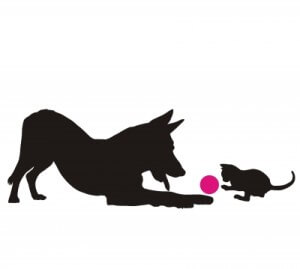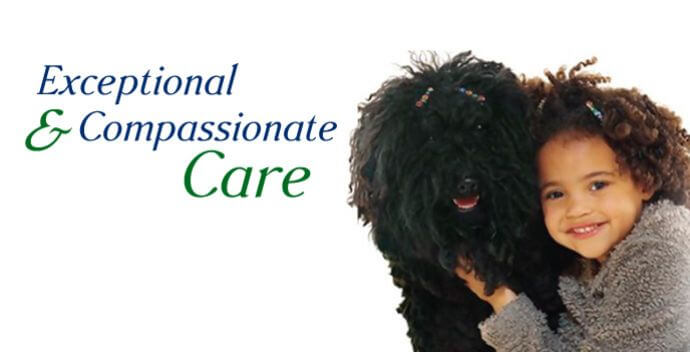Introducing New Pets to Existing Pets
 Getting a new pet is exciting. You bring them home and watch them explore all over sniffing and getting a sense of who you are and where they are. Should you already have a pet and are considering getting a new pet, you might not be so sure how this process will take place without one animal getting hurt or upset. Don’t worry, we have some tips for you to help foster good relationships between your new pet and your existing pet.
Getting a new pet is exciting. You bring them home and watch them explore all over sniffing and getting a sense of who you are and where they are. Should you already have a pet and are considering getting a new pet, you might not be so sure how this process will take place without one animal getting hurt or upset. Don’t worry, we have some tips for you to help foster good relationships between your new pet and your existing pet.
First we have to remember that animals experience the world around them differently from humans. Animals are driven by their noses, their noses are the key to social behavior. Never place a new pet and an existing pet together unsupervised for the first time. Animals need to get used to one another’s scent before they can properly socialize together. This is done in a series of steps that requires patience and understanding.
For dogs you will have to crate them separate from the new animal. Place an article inside the existing dog’s crate with them that belongs to the new comer, and visa versa. This way each animal is smelling the other before they meet. Afterward you can let the new animal out of their crate to explore the house and the scent of your dog. Once the new animal has followed the trail of the old scent you crate the new comer and let the old dog out to trail the new scent around the house. You need to do this several times a day for a few days until each animal becomes familiar with the scent of the other animal.
Once this happens you can introduce them face-to-face in a neutral setting. This means using a neighbors backyard or a fenced in park for the first meet and greet. The older dog (or new comer if it’s a dog) should not be held on a leash because this can cause aggression, instead let each animal explore the other. Intervene if you see signs of aggression and make each animal feel secure. If things go badly, you will need to start the whole process over again. Dog’s are usually quicker to make friends than cats, so if you’re dealing with a cat you will use a different process.
Cat’s are extremely territorial, and this can make their acceptance of a new animal very hard on themselves, the new animal and you. Unhappy territorial cats will start fights, hiss and mark their territory with ferocity, so be sure to take it slow and easy! When purchasing another animal make sure that their personalities and activity levels match. Don’t buy a playful kitten or puppy to stay home with your elderly cat, that’s not fair to either of them.
When you bring home the new animal place them in a room with everything they need for the next week, their food, litter, toys, and bed. Feed your animals on each side of the door in close proximity so they can smell each other while they eat, but not be side-by-side. Gradually move the dishes closer together until the animals can eat calmly while smelling one another. Afterward you can take two toys and tie a string attaching them so the cat and the new comer can play together and smell one another.
While in this process make sure that both animals are receiving lots of attention so no one feels left out or neglected. Before a face-to-face meeting of your animals switch their beds or toys. Try rubbing a face cloth on the cheeks of your existing cat and place it around the feeding dish of the new cat. In the case of the dog, just letting it merely sniff and play with the objects is a way of introducing them because cats and dog’s leave their scents in different ways.
If you’ve got a new cat, now is the time to let them roam around the house smelling around for the old cat then through a door that is partially opened can you reveal the animals to one another. You should do this several times a day for a week and watch from the reaction of your existing cat to see how welcome the new comer is.
Through this process you’ll know when the time is right for the two animals to have their face-to-face introduction. Should this go favorably for you the cat will sniff around the new animal placing the familiar scent, or they might sit and stare at each other. If this is the case things are going great and you should try introducing play between them with a toy. And be sure to stay present throughout the first introduction. Should things sour be ready to throw a blanket over the cat and remove it form the situation.
Never try grabbing for a cat during a cat fight with your bare arms, you will be hurt for sure. Instead be ready with something large and soft to distract the cat from attacking the new animal. If you notice that the animals are stressed, or they start fighting remove both animals and start the process over again. You can increase the chance of amicability between them if each cat has their own litter box plus another one they can both use, if each animal has seen a vet and has no illnesses, each pet has a safe place thy can escape to and if the original cat’s routine is kept up.
If you’re introducing a puppy to older dogs much of the same rules apply for the dogs. with the exception that you have to remember that an older dog has lost that maternal/paternal feeling from being older. Be sure that the puppy is tired out and calm when interacting with the older dogs for the first month or more. Constantly crating a puppy does not encourage socialization, just be sure that you are present for all interactions of the older dog with the puppy.
And the recurring theme of this blog is patience. You need to have patience, the animals will work it our on their own terms, you can’t force animals to instantly befriend one another any more than you can make a stranger your new best friend. Relationships take time and animals are no exception.










 Website Created by TCP Global Solutions
Website Created by TCP Global Solutions